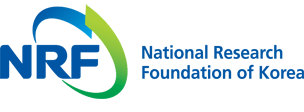투고논문
Abstract
References
Information
This study explores a painting of Water-Moon Avalokiteśvara dating from the Koryŏ Dynasty and kept at Tanjan Jinja Temple in Japan (hereinafter the Tanjan Jinja painting), focusing on the cultural context of its appreciation and interpretation centered on the accompanying painting eulogy. Although a few Koryŏ paintings feature inscriptions a unique aspect of the Tanjan Jinja painting is that it includes a verse eulogy. Painting eulogies complemented and clarified the intended expression of a painting; therefore, they are essential for understanding the contextual interpretation of the artwork of the time.
Based on differences in the eulogy writing tradition between Korea and Japan and a lexical analysis, this study suggests that the painting eulogy of the Tanjan Jinja painting may have been composed in Japan rather than in Koryŏ. Unlike in Koryŏ, where the convention of eulogy writing on Buddhist paintings was uncommon, during the Kamakura and Muromachi periods in Japan, this practice was established against the backdrop of the influx of Jiangnan Chinese culture and the activities of Chan/Zen masters. Phrases such as “栴亶紫竹林” and “懸崖垂手處” and the depiction of Avalokiteśvara and Sudhana in a manner similar to that practiced by Zen monks suggest that the painting eulogy was created within the context of Zen culture after the painting had been transferred to Japan.
The eulogy on the Tanjan Jinja painting illustrates how the painting was received and interpreted within the Japanese Zen cultural framework. Although it is unclear whether the eulogist was aware of the painting’s place of creation, the content and form of the eulogy reveal that he interpreted the painting based on his own cultural context rather than its origin. Thus, the interpretation of the painting was significantly influenced by the cultural traditions of the eulogist, rather than by the visual elements or iconography of the artwork itself.
Based on differences in the eulogy writing tradition between Korea and Japan and a lexical analysis, this study suggests that the painting eulogy of the Tanjan Jinja painting may have been composed in Japan rather than in Koryŏ. Unlike in Koryŏ, where the convention of eulogy writing on Buddhist paintings was uncommon, during the Kamakura and Muromachi periods in Japan, this practice was established against the backdrop of the influx of Jiangnan Chinese culture and the activities of Chan/Zen masters. Phrases such as “栴亶紫竹林” and “懸崖垂手處” and the depiction of Avalokiteśvara and Sudhana in a manner similar to that practiced by Zen monks suggest that the painting eulogy was created within the context of Zen culture after the painting had been transferred to Japan.
The eulogy on the Tanjan Jinja painting illustrates how the painting was received and interpreted within the Japanese Zen cultural framework. Although it is unclear whether the eulogist was aware of the painting’s place of creation, the content and form of the eulogy reveal that he interpreted the painting based on his own cultural context rather than its origin. Thus, the interpretation of the painting was significantly influenced by the cultural traditions of the eulogist, rather than by the visual elements or iconography of the artwork itself.
본 논문은 고려 시대에 제작된 일본 단잔진자(談山神寺) 소장 <수월관음도>의 화찬(畫讚)을 중심으로 이 작품의 감상과 해석의 문화적 배경을 고찰한다. 고려 시대 불화 중 화기가 있는 작품은 일부 있으나, 시 형식의 찬문이 포함된 경우는 <단잔진자본>이 유일하다. 화찬은 그림이 나타내고자 하는 바를 보완하거나 더욱 명징하게 드러내는 역할을 한다. 따라서 화찬에 주목하는 것은 당시 해당 작품의 감상과 해석의 맥락을 알 수 있다는 점에서 중요한 작업이다.
본 연구는 고려와 일본 간의 화찬 전통의 차이와 화찬에 사용된 어휘 분석을 통해 <단잔진자본>의 화찬이 고려가 아닌 일본에서 작성되었을 가능성을 제시했다. 불교 회화에 화찬을 남기는 문화가 성행하지 않았던 고려와 달리 가마쿠라에서 무로마치시대에 이르는 기간의 일본에서는 중국 강남 문화의 유입과 선승들의 활동을 배경으로 선종화에 찬문을 적는 문화가 자리잡았다. 또한 ‘栴亶紫竹林’, ‘懸崖垂手處’ 등의 구절이나 관음보살과 선재 동자를 선문의 사승관계처럼 묘사한 점은 화찬이 일본으로 건너간 이후, 선종 문화를 배경으로 제작되었음을 짐작케한다.
<단잔진자본>의 화찬은 일본 선종 문화 내에서 이 그림이 어떻게 수용되고 해석되었는지를 보여준다. 찬자인 ‘비구 선민’이 작품의 원 제작처를 인식하고 있었는지는 알 수 없지만 화찬의 내용과 형식은 그가 그림의 연원이나 제작처보다는 자신의 문화적 맥락을 바탕으로 그림을 해석했음을 드러낸다. 즉 화찬을 통해 <단잔진자본>의 시각적 요소나 도상보다는 찬자가 속한 문화 전통이 작품의 해석에 더 중요한 역할을 했던 것이다.
본 연구는 고려와 일본 간의 화찬 전통의 차이와 화찬에 사용된 어휘 분석을 통해 <단잔진자본>의 화찬이 고려가 아닌 일본에서 작성되었을 가능성을 제시했다. 불교 회화에 화찬을 남기는 문화가 성행하지 않았던 고려와 달리 가마쿠라에서 무로마치시대에 이르는 기간의 일본에서는 중국 강남 문화의 유입과 선승들의 활동을 배경으로 선종화에 찬문을 적는 문화가 자리잡았다. 또한 ‘栴亶紫竹林’, ‘懸崖垂手處’ 등의 구절이나 관음보살과 선재 동자를 선문의 사승관계처럼 묘사한 점은 화찬이 일본으로 건너간 이후, 선종 문화를 배경으로 제작되었음을 짐작케한다.
<단잔진자본>의 화찬은 일본 선종 문화 내에서 이 그림이 어떻게 수용되고 해석되었는지를 보여준다. 찬자인 ‘비구 선민’이 작품의 원 제작처를 인식하고 있었는지는 알 수 없지만 화찬의 내용과 형식은 그가 그림의 연원이나 제작처보다는 자신의 문화적 맥락을 바탕으로 그림을 해석했음을 드러낸다. 즉 화찬을 통해 <단잔진자본>의 시각적 요소나 도상보다는 찬자가 속한 문화 전통이 작품의 해석에 더 중요한 역할을 했던 것이다.
- K
Koryŏ taejanggyŏng 高麗大藏經. 48 vols. Photolithographic reprint; Seoul: Dongguk University Press, 1957-1976. - T
Taishō shinshū daizōkyō 大正新修大藏經, eds. by TAKAKUSU Junjirō 高楠順次郞 and WATANABE Kaikyoku 渡邊海旭, 100 vols. Tōkyō: Daizōkyōkai, 1924-1935. - 『景德傳燈錄』 T2076.
- 『大藏一覽集』 K1504.
- 『法華經』 T262.
- 『補陀洛伽山志』 National Archives of Japan 國立公文書館.
- 『華嚴經』 T278, T279, T293.
- 『圓悟佛果禪師語錄』 T1997.
- BINGENHEIMER, Marcus. 2016.
Island of Guanyin: Mount Putuo and Its Gazetteers , Oxford: Oxford University Press.10.1093/acprof:oso/9780190456191.001.0001 - CHEN, Char-ling 陳昭伶. 2015. 「宋代禪僧畫贊中楊柳觀音之形象」 (“The Images of Guanyin with Willow Branch in Huazans of Ch’an Monks of Song Dynasty”), 『法印學報』(
Journal of Dharma Seals ), vol. 5, 211-230. - CHO, Yeong Rok 조영록. 2012. 「羅·唐 동해 관음도량, 낙산과 보타산 - 동아시아 해양불교 교류의 역사 현장」(“Ra·Dang East Sea Gwaneumdoryang, Naksan and Putuoshan - Historical site of marine Buddhist exchange of East Asia)”, 『정토학연구』(
Journal of The Pure Land Buddhism Studies ), vol. 17, 197-235. - Dongguk University Academy of Buddhist Studies 동국대학교 불교학술원. 불교기록문화유산 아카이브(Archives of Buddhist Culture), https://kabc.dongguk.edu/ (2024.08.07. 검색).
- HARADA, Masatoshi. 2011. “The Gozan Zen Sects in the History of Japanese Buddhism,”
A Selection of Essays on Oriental Studies of ICIS , vol. 1, 29-46. - Hoam Museum of Art 호암미술관, ed. 2024. 『진흙에 물들지 않는 연꽃처럼』(
Unsullied, Like a Lotus in Mud ), Yongin: Hoam Museum of Art 호암미술관. - HORIKAWA, Takashi 堀川貴司. 2015. 「五山文学における偈頌と詩」 (*“
Gāthā and Poetry in Gozan Literature”), 『駒澤大學佛教文學研究』(Journal of Comparative Buddhist Literature ), vol. 18, 27-44. - HORIKAWA, Takashi 堀川貴司. 2021. 「詩歌と絵画・画賛の文化―日本中世禅林を中心に」 (*“The Culture of Poetry, Painting, and Inscribed Paintings: Focusing on Medieval Japanese Zen Monasteries”), 『東アジア文化講座』(*
Lecture onEast Asian Culture ), vol. 4, 139-146. - HWANG, Geumsun 황금순. 2003. 「高麗 水月觀音圖에 보이는 『40華嚴經』영향」 (*“The Influence of the Forty-fascicle
Avataṃsaka Sūtra on the Water-Moon Avalokiteśvara Paintings of Koryŏ Dynasty), 『미술사연구』(Journal of ART History ), vol. 17, 31-78. - HWANG, Su-jeong 황수정. 2019. 「고려시대 제화시의 생성과 유입 문화」 (“Creation and Introduction Culture of
Jehwasi In Goryeo Period”), 『동아인문학』(Donga Inmunhak ), vol. 48, 1-35. 10.52639/JEAH.2019.09.48.1 - ITAKURA, Masaaki 板倉聖哲. 1994. 「(解說) 北礀居簡贊 善財童子圖」(*“The Painting of Sudhana with Bokukan Kyokan’s Eulougy”), 『國華』(
The Kokka ), vol. 1181, 15-21. - JUNG, Sejin 정세진. 2021. 「五山禪僧의 對中國 집단학습활동을 통한 관련 지식 축적 및 인식 전파에 관한 연구 (2)」(“Accumulating and Spreading the Knowledge and Recognition of China by the Japanese Osan-zen Monks through Mass Studying Activities in the 14-16th Century (2): China Nearby Through Writing and Painting”), 『중국문학』(
Chinese Literature ), vol. 107, 49-76. - KANG, Heejung 강희정. 1994. 「고려 수월관음도상의 연원에 대한 재검토」(*“A Reexamination of the Origin of the Water-Moon Avalokiteśvara Paintings of Koryŏ Dynasty”), 『미술사연구』(
Journal of ART History ), vol. 8, 3-32. - KANG, Heeyeun 강희연. 2019. 「牧谿 繪畵 受容 樣相 硏究: <觀音猿鶴圖>와 <栗枾圖>를 中心으로」(“A Study of the Reception of Muqi’s Paintings”), Master Thesis 석사학위논문, Seoul National University 서울대학교.
- KHO, Youen-hee 고연희. 2015. 『화상찬으로 읽는 사대부의 초상화』(*“Portraits of the Scholar-Officials: Reading Through Painting Eulogies”), Seoul: The Academy of Korean Studies Press 한국학중앙연구원출판부.
- KIM, Daeyeoul 김대열. 2010. 「선종의 공안과 수묵화 출현에 관한 연구」(“A Study on the Appearance of Ink & Water Painting in Relation to Chan Gong-an”), 『종교교육학연구』(
Korean Journal of Religious Education ), vol. 34, 107-127. - KIKUTAKE, Junichi 菊竹淳一. 1996. 『高麗時代의 佛畵』(*
Buddhist Paintings of Koryŏ Period ), Seoul: Sigongsa 시공사. - KIM, Ki Wan 김기완. 2009. 「조선후기 사대부 초상화찬 연구」(“A Study on the Latter Joseon Period Portrait Panegyrics of Aristocrats”), 연세대학교 석사학위논문.
- KIM, Soyeon 김소연. 2022. 「성지(聖地)의 재해석: 일본 조쇼지(定勝寺) 소장 <보타락가산성경도(補陀洛迦山聖境圖)>와 그 유전(遺傳)을 통해 본 중국과 일본의 보타락가산 신앙」(“Reinterpreting a sacred place: A study on Mount Potalaka worship in China and Japan through Budaluojia Guanyin xianshen shengjingtu and its dissemination”), 『미술사와시각문화』(
Art History and Visual Culture ), vol. 20, 188-217. - Kyushu National Museum 九州國立博物館. 2023. 『うるわしき祈りの美―高麗朝鮮時代の佛敎美術』(
The Beauty of Prayer:Buddhist Art from the Goryeo and Joseon Dynasties ), Dazaifu: Kyushu National Museum 九州國立博物館. - LEE, Dongju 이동주, et al. 1985. 『고려불화』(*
Koryŏ Buddhist Paintings ), Seoul: Jungang Ilbo 중앙일보사. - LEE, Tae-ho 이태호. 1994. 「高麗 佛畵의 製作技法에 대한 고찰: 染色과 背彩法을 중심으로」(*“A Study on the Techniques of
Koryŏ Buddhist Paintings: Focusing on Dyeing and Back Painting Methods”), 『미술자료』(Misul Charyo ), vol. 53, 135-151. - LIPPIT, Yukio. 2009. “Apparition Painting”,
RES: Anthropology and Aesthetics , vol. 55/56. 61-86.10.1086/RESvn1ms25608836 - National Archives of Japan 國立公文書館, https://www.digital.archives.go.jp/ (2024.08.07. 검색).
- National Museum of Korea 국립중앙박물관. 2010. 『고려불화대전』(
Masterpieces of Goryeo Buddhist Painting ), Seoul: National Museum of Korea 국립중앙박물관. - NISHIO, Yoshiyuki. 1993. “Maintenance of East Asian Painting (Examination)”,
The Book and Paper Group Annual , vol. 12, 32-35. - OTA, Toru 太田亨. 2008. 「日本中世禪林における杜詩受容」 (“On Du Fu Poetry Accepted in Japanese Medieval Chanlin”, 『禪學研究』(
Studies in Zen Buddhism ), vol. 86, 99-125. - Paengnyŏnsŏnsŏ Kanhaenghoe 백련선서간행회. 1992. 『나호야록』 (*“Record of Anecdotes from Lake Lu”) Seoul: Janggyeonggak 장경각.
- SHIMADA, Shujiro 島田修二郞 and IRIYA Yoshitaka 入矢義高. 1987. 『禪林畵贊―中世水墨畵をよむ』(*“Painting Eulogies of Zen Forest: Interpreting Medieval Ink Paintings”), Tōkyō: Mainichi Shinbunsha 每日新聞社.
- SIM, Kyung-ho 심경호. 2015. 「조선의 화상과 찬에 관한 窺見」(“Portraits and Panegyrics in Chosŏn Period”), 『국문학연구』 (
Journal of Korean Literature ), vol. 31, 71-109. - _______. 2020. 『옛그림과 시문』 (*
Old Paintings and Literary Works ), Seoul: Sechang Publishing 세창출판사.
◆ 약호 및 일차 문헌 Abbreviations and Primary Sources
◆ 이차 문헌 Secondary Literature
- Publisher :Korean Association of Buddhist Studies
- Publisher(Ko) :불교학연구회
- Journal Title :Korean Journal of Buddhist Studies
- Journal Title(Ko) :불교학연구
- Volume : 80
- Pages :63∼92
- DOI :https://doi.org/10.21482/jbs.80..202409.63



 Korean Journal of Buddhist Studies
Korean Journal of Buddhist Studies






